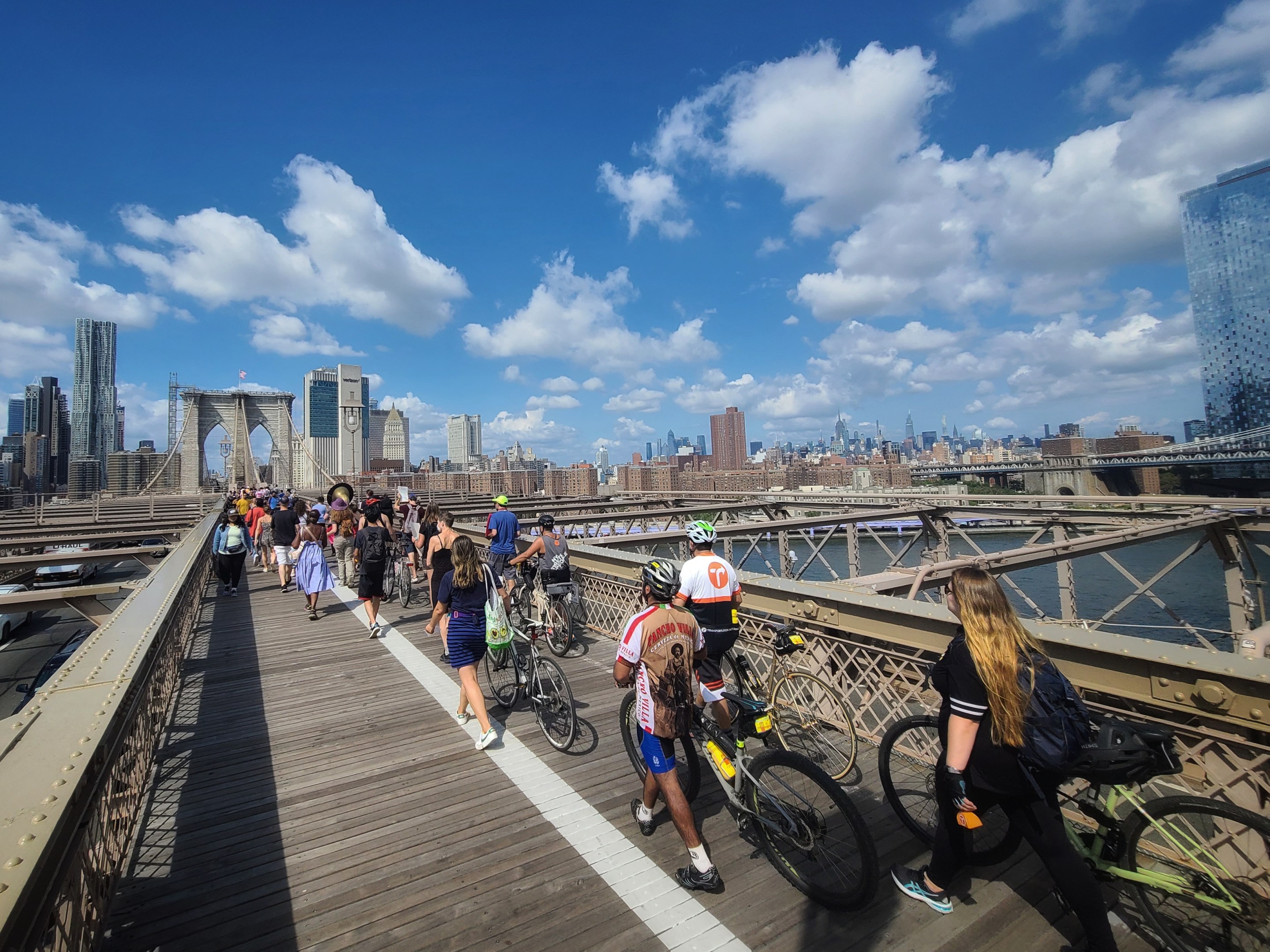For years, activists had called on city officials make the sclerotic Brooklyn Bridge safer for biking and walking — a campaign that culminated finally in last month's opening of the protected bike lane on the westbound roadway of the fabled span. But there is still so much more work to do to prioritize people instead of cars, so we asked the organizers of Transportation Alternatives' Bridges 4 People campaign to map the route forward.
The new Brooklyn Bridge lane is an important first step, but much more is needed: Now is the time to build on that momentum with bold infrastructure changes. We are facing a record-breaking year for traffic violence and need a truly connected bike network across the city that enables cyclists to plan trips entirely along protected routes. This new connected network would feature wide protected bike lanes that meet national standards on all the bridges that connect our boroughs, including the East River bridges, the Verrazzano-Narrows Bridge, and the Washington Bridge.
The Brooklyn Bridge needs further improvement to realize this safer network: Another car lane must be reallocated to create wider bike paths, and streets near its entrances need redesigning to facilitate protected connections to nearby bike routes so people who use the new lanes can reach their destinations safely. We need to roll these improvements out rapidly and holistically instead of through a gradual, piecemeal process, in order to ensure that life-saving infrastructure reaches everyone and works for everyone, including working cyclists on cargo bikes and families with young children.
Last year, we launched the Bridges 4 People campaign to ask the mayor to reallocate two car lanes on each of the bridges connecting Brooklyn and Manhattan into protected space for cyclists and convert existing bike paths into more pedestrian space. Our vision is rooted in the belief that New Yorkers should not have to avoid walking and cycling in such beautiful and beloved city spaces simply because of the unnatural prioritization of cars. Bridges 4 People imagines what’s possible when our public spaces serve the majority of New Yorkers who do not own cars, and the Brooklyn Bridge's new bike path brings the city closer to this vision.
The quick implementation of the new lane immediately improved the quality of life for millions of city residents and visitors. Thousands of commuter cyclists, sightseers, and deliveristas no longer have to reroute to the Manhattan Bridge in order to find more safety. The new option relieves the increased congestion the bike boom brought to the Manhattan Bridge. Couples and tourists posing for the perfect panoramic shot on the bridge promenade no longer need to dodge cyclists, and we were even easily able to parade across the bridge with a brass band and bikes to celebrate the bridge last month.
Our efforts to transform the Brooklyn Bridge were propelled by the bike boom and the COVID-19 pandemic, but there is another crisis that necessitates bike ubiquity: climate change. Catastrophic climate events are already here — we recently lost 13 New Yorkers to Ida's flooding — and the latest UN report confirms that radical government action is needed to avoid further imminent climate disaster. We need to reclaim more space for cycling, walking, and transit so people can shift to the safe, reliable, zero-emission transportation alternatives that help guarantee the city's bridges and streets will be here for generations to come.
We have seen the incredible transformation that is possible in a short amount of time with the Brooklyn Bridge's new bike path, and we look forward to construction beginning on the new bike lane on Queensboro Bridge this year. We urge Mayor de Blasio and our next mayor to empower the DOT to swiftly enact the necessary changes so all our bridges and streets center people, not cars. Activists should not have to fight for decades more just to secure our fair share on bridges for the majority of New Yorkers who do not own cars.
Liz Denys, Diane Martins, and Katherine Willis are leaders of Transportation Alternatives's Bridges 4 People campaign.







